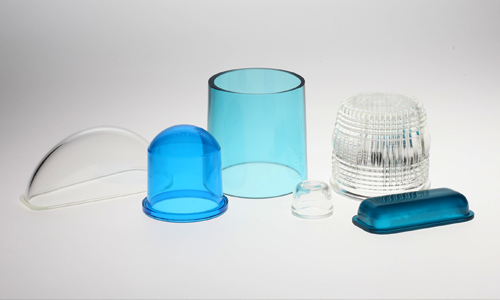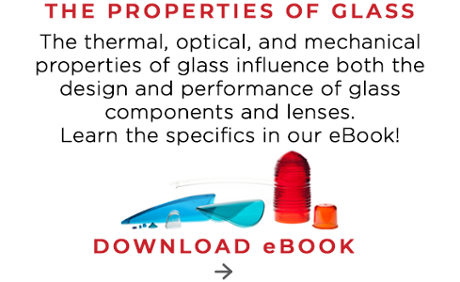 Designing a glass lens, filter, or component? Not sure how to best meet your performance requirements? Our comprehensive eBook on the properties of glass can help you.
Designing a glass lens, filter, or component? Not sure how to best meet your performance requirements? Our comprehensive eBook on the properties of glass can help you.
Glass is a unique and complex material—much different than other transparent materials; if you’re new to designing glass lenses, it can be an intimidating challenge. You’re probably wondering why some glasses are more durable in harsh environments, and others aren’t. Or why some glasses transmit ultraviolet light, and others only transmit infrared light. You may be wondering why some glasses can withstand impact from hail, but will degrade after prolonged chemical exposure.
It all comes down to the thermal, mechanical, and optical properties of a glass. The chemical composition of a glass can be engineered to produce different properties and characteristics for specific applications. To successfully engineer glass lenses, you need to understand what these properties are and how they influence both your design and the ultimate performance of your product.
To help you understand the unique properties of glass we created a comprehensive eBook that reviews the thermal, optical, and mechanical properties of glass.
Inside The Properties of Glass eBook, you'll find:
A Comparison of Common Glass Compositions
There are three glass types commonly used for technical glass products: borosilicates, soda-lime silicates, and phosphates. In the eBook, we review these glasses and discuss their differences and common applications.
Comprehensive Overview of the Thermal, Optical, and Mechanical Properties of Glass
This eBook provides a comprehensive overview of the glass properties that are most important to successful lens and component design. We provide definitions for these properties and discuss how they’re determined or calculated. Also, the eBook includes application case studies that illustrate how these properties behave in the real-world and affect the design and performance of your product.
Transparent Material Comparison
Not all transparent materials perform the same; to understand which material is best for your application you need to understand these differences. The eBook includes several properties comparison tables that compare the mechanical, optical, and thermal properties of common transparent materials, including borosilicate glasses, soda-lime silicate glass, polycarbonate, silicone, quartz, etc.
If you want to learn how to design glass lenses and components that are optimized for both your performance requirements and operating environment, download our free eBook.


